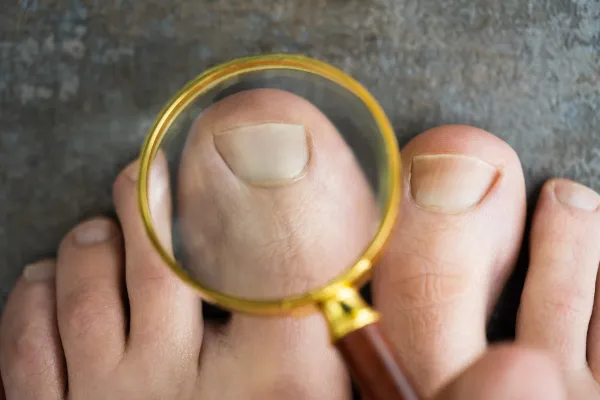
Battling Ingrown Toenail Drama Like a Pro
Foot pain can throw a wrench into our daily routines. Whether it's a bothersome corn, a persistent bunion, or something more serious like plantar fasciitis, those throbbing feet can turn even the easiest tasks into a struggle. But hold on before you grab those painkillers; it's time to get on the right track.
In this post, we're diving deep into a topic that many folks know all too well: the world of infected ingrown toenails. It might not sound like the most thrilling subject, but trust me, understanding what happens when an ingrown toenail takes a nasty turn is crucial.
Let's Get Personal: An Infected Ingrown Toenail Tale
Imagine this: You're going about your day, maybe wearing tight-fitting shoes or accidentally cutting your toenails too short. Suddenly, you notice that your toe is red, swollen, and throbbing with pain. You might be dealing with an infected ingrown toenail – and it's not fun!
So, what exactly is an infected ingrown toenail, and why does it happen?
The Ingrown Toenail Dilemma
An ingrown toenail occurs when the edge of your toenail, usually the big one, grows into the skin surrounding it. It's like your nail is trying to dig itself into a cozy little home where it shouldn't be. Ouch!
Now, here's where things can take a turn for the worse. If that ingrown toenail becomes infected, it goes from being a minor annoyance to a full-blown discomfort.
The Telltale Signs of Infection
So, how do you know if your ingrown toenail is infected? Well, your toe might start showing some not-so-pleasant signs, like:
Redness: Your toe will turn into a shade of angry red, indicating inflammation.
Swelling: The area around the toenail will puff up like a balloon, causing discomfort.
Pain: Oh, the pain! You'll feel a throbbing or sharp pain at the site of the ingrown nail.
Pus or Drainage: If things get really nasty, you might notice pus or fluid oozing out. Not a pretty sight, I must say!
Warmth: Your toe might feel warm to the touch, another sign of infection.
The Culprits Behind the Chaos
Now, you might be wondering, "How does this happen?" Well, there are a few common culprits:
Incorrect Nail Trimming: Cutting your nails too short or rounding them off instead of trimming them straight across can encourage ingrown nails.
Tight Shoes: Shoes that squeeze your toes or put pressure on your toenails can push them into the skin.
Injury: Stubbing your toe or any trauma to the nail area can lead to ingrown toenails.
Poor Hygiene: Neglecting proper foot hygiene can create an environment ripe for infection.
What Can You Do About It?
If you suspect you have an infected ingrown toenail, don't worry – there are steps you can take to address it. Here's a simple guide:
Soak Your Foot: Soak your foot in warm, soapy water for about 15-20 minutes to soften the skin and nail.
Gently Lift the Nail: Using a clean, disinfected tool (like a piece of dental floss), carefully lift the edge of the ingrown nail away from the skin.
Keep it Clean: Clean the area with an antiseptic solution and apply an antibiotic ointment.
Bandage Up: Bandage the toe to protect it from further infection.
Choose Sensible Footwear: Opt for shoes that give your toes room to breathe and heal.
However, if the infection doesn't improve or gets worse, it's essential to seek help from a podiatrist like the ones here at Achilles Foot Clinic. They can safely and effectively treat the infection and guide on preventing future ingrown toenails.
Wrapping it Up
Dealing with an infected ingrown toenail might not be the highlight of your day, but with the right care and attention, you can kick that discomfort to the curb. Remember, it's essential to address it promptly to prevent it from becoming a bigger issue.
Stay comfortable, take care of your feet, and if you ever find yourself in a toenail pickle, know that the team at Achilles Foot Clinic is here to help you put your best foot forward!
You Can Call Us On 0212021001
Or
Fill Out The Form Below & One Of The Achilles Foot Clinic Team Will Call You Back
